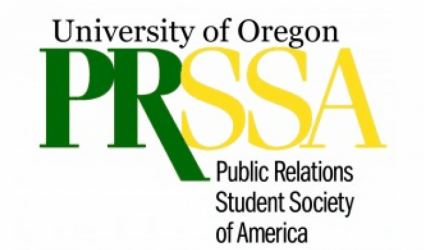Guest Blog Post by Josh Wei, Founder of UltraPress, the fastest and cheapest place for custom apparel.
There’s a commonly perpetuated lie in the small business world. It goes like this: “You can’t be successful at PR, because it’s too expensive.” Unfortunately, many SBOs take this statement as fact and never even attempt to develop a PR strategy. As a result, they’re left scrambling to compete against bigger companies with deeper pockets.
While PR can get expensive, it doesn’t have to be out of your price range. For even just a few hundred dollars per year, you can invest in a full-fledged PR campaign that pushes your brand to the top. However, you have to be willing to ignore the noise and silence the myths.
PR Isn’t Optional
Contrary to what some say, PR is not optional. Regardless of the size of your business, the industry you operate in, and the budget you have at your disposal, you can’t ignore PR. As soon as you have a product created and a brand developed, you must begin working on relationship building.
According to business writer Jerome Cleary, there are four main reasons why PR matters for a small business. They are as follows:
- Brand reputation. This is by far the number one reason for investing in PR. “The more your brand is recognized,” says Cleary, “the higher you are perceived as a leader in your field and consequently, the more you receive additional business.”
- Networking and relationship building. The second reason to invest in PR is that it helps you build relationships and networking opportunities both inside and outside of your industry. You never know when you’re going to need someone to help you, and PR opens up a number of doors.
- Industry credibility. “As many people realize often too late, merely opening a business, setting up a website or publishing a book is just not enough to turn you into the go-to resource for your field,” Cleary points out. You need someone to strategically position your brand as credible and worthy.
- Finally, the fourth reason PR matters is that it allows you to take full advantage of market opportunities as they’re presented to you. Without a formal PR strategy in place, you’ll miss out on opportunities because you don’t know they exist.
Basically, you can’t afford to ignore PR. And while it may cost you time, resources, and money to develop and maintain a strategy, it doesn’t have to break the bank.
5 Free or Cheap PR Options and Solutions
So, how exactly can you do PR on a budget? Well, you need to arm yourself with the right tools and solutions. The good news is that many are free or cheap, including the following:
- HARO:
Out of all the online PR services available, HARO – or Help a Reporter Out – is by far the best. This service works by connecting reporters with a variety of potential sources for stories. It’s designed to be a two-way street that helps both journalists and brands.
The service gives journalists the ability to find relevant stories, while simultaneously allowing brands to secure valuable media coverage. If you take a look at the HARO website, you’ll notice that a number of media outlets use the service, including TIME, Mashable, The New York Times, Wall Street Journal, ABC, and more. You can learn more about how HARO works from the brand side by checking out their How it Works page. Subscriptions run from free all the way up to $149 per month for a premium account.
- Tomoson:
Do you sell physical products? Do you want to get the word out about your product? Tomoson may be the answer. This software manages and matches influencers with brands for valuable reviews and social proof. It allows you to give products away to bloggers and people in your target market with the hope of creating some buzz. You can then see who has received your products, talked about them on social media, and posted about them on their blogs.
There are currently more than 20,000 influencers on Tomoson, and the site is growing by the day. It’s a really great way to kick start organic growth and grassroots sharing. For a business account, you can start out with a free 30-day trial. After that, monthly accounts range from $99 to $499 per month.
- Guest Blogging:
Honestly, one of the best things you can do is start guest blogging. You don’t even have to write about your brand or products. Just start building relationships with different industry blogs and make sure a byline is included as part of the compensation. Also, don’t be surprised if it’s the only compensation.
As you start accumulating profiles, you’ll begin to gain some name recognition in the industry. Ultimately, this will lead to brand recognition. And once you’ve built enough equity, you may even be able to start writing about your business and products.
This is obviously a long-term approach, but it’s something every smart business owner should do. These blogging relationships are the modern day equivalent of knowing your local newspaper writers. They’ll help immensely in the long run. If you’re unsure of how to find guest blogging relationships, try Guestr. This website shows you which websites and blogs are looking for guest contributors.
- Leverage Twitter:
Another very simple thing you can do is get in touch with media members via Twitter. You want to avoid being creepy or obnoxious, but sending an occasional direct message, retweeting posts, and responding to tweets is a great way to make an introduction. After all, you’re much more likely to have a pitch accepted if the person at least knows your name.
- Monitoring Tools:
Part of being successful in PR is accurately tracking your progress and gaining insights into how your different efforts and campaigns are being perceived in the marketplace. Once your name gets out there and you have multiple things happening, it’s difficult to do this manually. This is where PR monitoring tools come into play.
There are a number of cheap or free options available. HubSpot has compiled a list of the top 18 tools for monitoring and managing media relations. There are some really good ones on this list. Look through them and see if you can find some that align with your brand.
If you’re just starting out with PR, you may not need these tools yet. They are designed for brands that already have campaigns in place. However, over time, you’ll find that they are invaluable. It’s better to start using them in advance than it is to learn about them on the fly.
PR Doesn’t Have to be Expensive
Your competitors want you to believe that PR is expensive. They want you to think that it’s something only Fortune 500 companies and large organizations with massive budgets can get involved with. And while you may not be able to afford a full-time publicist, there are plenty of things you can do to push your brand forward and find opportunities.
PR doesn’t have to be expensive if you use the right tools and understand how to stretch your budget. Keep these five options in mind and start to develop a cost-effective PR strategy that allows you to achieve success in 2016 and beyond.











 Connie Chandler, a public relations instructor in the School of Journalism, gives us her top-three reasons to build relationships with our instructors on campus.
Connie Chandler, a public relations instructor in the School of Journalism, gives us her top-three reasons to build relationships with our instructors on campus.
